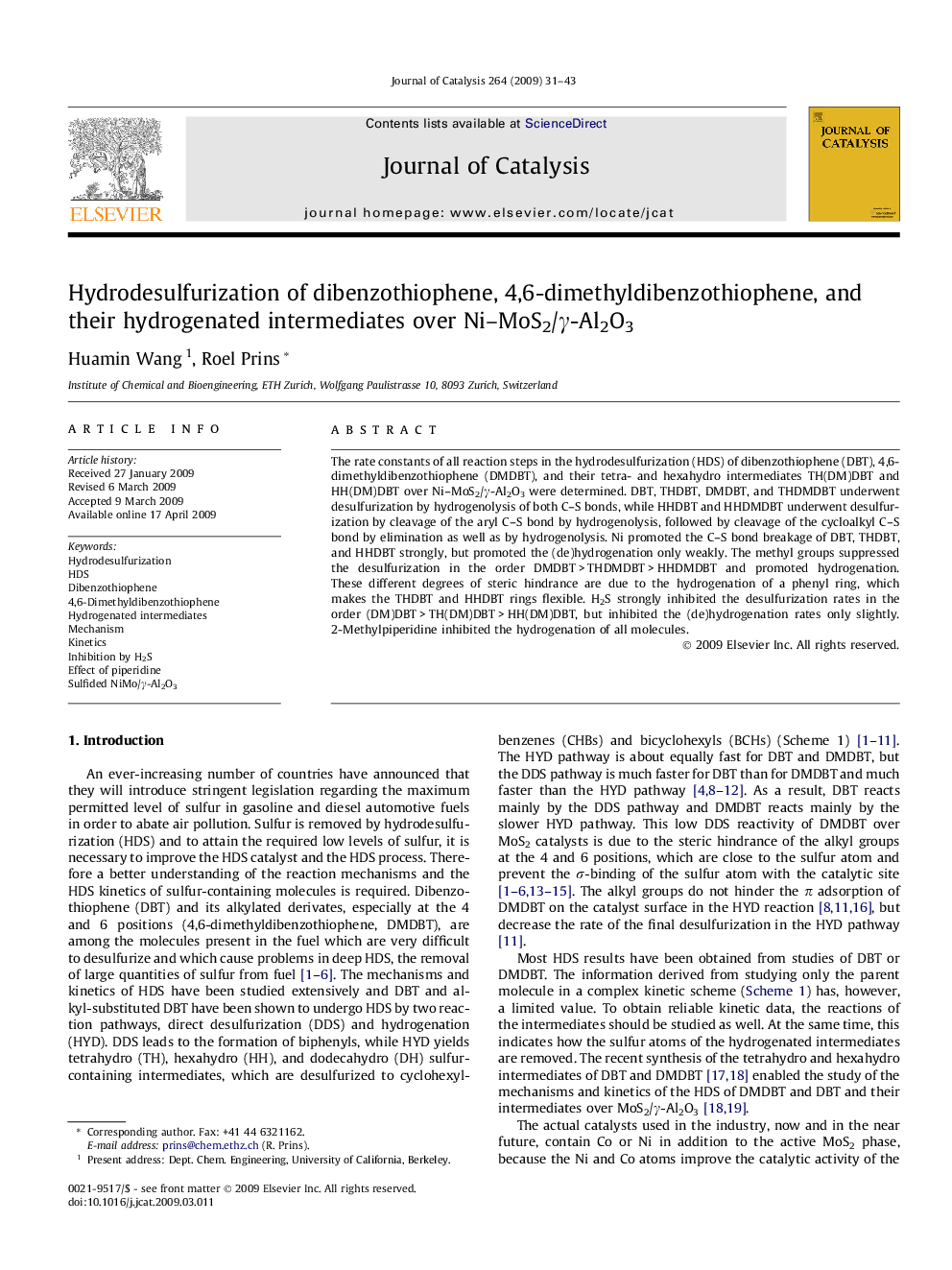| Article ID | Journal | Published Year | Pages | File Type |
|---|---|---|---|---|
| 62312 | Journal of Catalysis | 2009 | 13 Pages |
The rate constants of all reaction steps in the hydrodesulfurization (HDS) of dibenzothiophene (DBT), 4,6-dimethyldibenzothiophene (DMDBT), and their tetra- and hexahydro intermediates TH(DM)DBT and HH(DM)DBT over Ni–MoS2/γ-Al2O3 were determined. DBT, THDBT, DMDBT, and THDMDBT underwent desulfurization by hydrogenolysis of both C–S bonds, while HHDBT and HHDMDBT underwent desulfurization by cleavage of the aryl C–S bond by hydrogenolysis, followed by cleavage of the cycloalkyl C–S bond by elimination as well as by hydrogenolysis. Ni promoted the C–S bond breakage of DBT, THDBT, and HHDBT strongly, but promoted the (de)hydrogenation only weakly. The methyl groups suppressed the desulfurization in the order DMDBT > THDMDBT > HHDMDBT and promoted hydrogenation. These different degrees of steric hindrance are due to the hydrogenation of a phenyl ring, which makes the THDBT and HHDBT rings flexible. H2S strongly inhibited the desulfurization rates in the order (DM)DBT > TH(DM)DBT > HH(DM)DBT, but inhibited the (de)hydrogenation rates only slightly. 2-Methylpiperidine inhibited the hydrogenation of all molecules.
Graphical abstractRate constants in kPa mol/(g min) for the reaction steps in the HDS of DBT (in blue) and 4,6-DMDBT (in red) over Ni–MoS2/γ-Al2O3.Figure optionsDownload full-size imageDownload high-quality image (169 K)Download as PowerPoint slide
